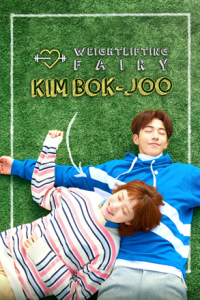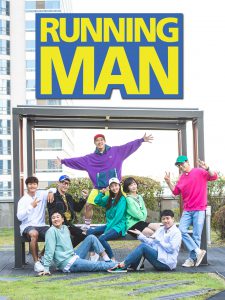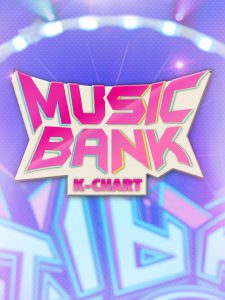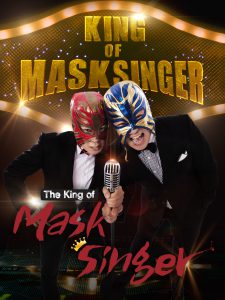WHY ARE WESTERN AUDIENCES FALLING HEAD OVER HEELS FOR K-DRAMAS?
MTV News
WHY ARE WESTERN AUDIENCES FALLING HEAD OVER HEELS FOR K-DRAMAS?
KOREAN DRAMAS ARE SHORT, CHASTE, AND A TOTALLY ADDICTIVE HOLLYWOOD ALTERNATIVE YOU CAN STREAM RIGHT NOW
By Jae-Ha Kim
In 2009, a rich South Korean high schooler became fixated on a poor scholarship student. Annoyed by her disinterest in him, he had her kidnapped, knocked out with chloroform, and taken to his house, where the unconscious girl was given a makeover to become more physically attractive to him.
The wealthy teen sounds like a serial killer in the making, right? But he’s actually the lead character in the hit Korean series Boys Over Flowers, a gateway drama that was popular with international viewers as well as Koreans. As the story unfolded, the young man (played by A-list actor Lee Min-Ho) became a sympathetic character, whose abusive behavior was excused as the writers concocted a teary backstory to explain away some of his sociopathic behavior.
Welcome to the world of K-dramas, where over-the-top story lines mesh with chaste romance to create some of the most deliciously addictive viewing on TV.
In her academic paper ‘The Korean Wave and Korean Dramas,’ Claflin University associate professor Dr. Hyejung Ju writes, “For the past two decades, the Korean Wave has been recognized in many parts of the world. More recently, the outbound scope of K-drama and K-pop has further reached dispersed global audiences, most of whom are not Korean media consumers or fans.”
Some 18 million viewers in the United States stream Korean dramas. The U.S. accounts for five- to six-percent of the international viewership, according to the Korea Creative Content Agency (KOCCA) — a government agency that monitors Korean entertainment.
The U.S. market for Korean dramas is small compared to some Asian countries — Japan and China each account for about 30 percent of Korea’s international market — but Western television executives have caught on that Korea’s brand of entertainment has something that resonates here. Korean-American actor Daniel Dae Kim (Lost, Hawaii Five-0) took the 2013 Korean medical procedural Good Doctor (굿 닥터) and adapted it into a hit for ABC called — surprise! — The Good Doctor. Likewise for Fox’s incredibly meme-able singing competition series The Masked Singer, which is the American version of Korea’s The King of Mask Singer. Adaptations of Strong Woman Do Bong-soon (with pro wrestler Ronda Rousey attached to the project) and Korean coming-of-age film Sunny, which producer Kevin Hart has renamed Bye Bye Bye, are also in the works.
But unlike U.S. television dramas, which tend to go on for seasons on end (Grey’s Anatomy, for example, is in its 15th season), one of the unique aspects of K-dramas is that there’s a finite beginning and end to every series — one story arc that usually spans 16 to 20 episodes, each about an hour long. Because the programming airs for a relatively short period, there is little time for viewers to get bored with the characters, and viewers don’t have to watch a once-thriving series jump the shark by overstaying its welcome.
And when showrunners do decide on more than one season, the story lines tend to revolve around a different set of characters all together. The best example of this is the popular Reply anthology, which culminated with the superb Reply 1988.
That aside, what is it about K-dramas that keeps Westerners — most of whom have to rely on subtitles to understand what’s going on — coming back for more?
Many K-dramas offer something that Western shows aren’t providing these days: chaste storytelling that feels like a throwback to an earlier time. Some of the parents in SKY Castle — South Korea’s hottest drama at the moment — slept in separate beds, à la I Love Lucy. The lead characters on shows like What’s Wrong With Secretary Kim? and My Love From Another Star are sexually inexperienced men and women who’ve barely dated. In the latter, the male character literally faints when he is kissed. (Yes, he’s an alien whose body can’t handle human bodily fluids, but that’s a whole different story.)
‘The story lines are relationship-oriented, stakes are very high, and they’re gorgeous to watch cinematically,’ says A Small Revolution author Jimin Han, who also teaches at The Writing Institute at Sarah Lawrence College. ‘In Mr. Sunshine, love is split into different steps — introduction, handshake, hug, and longing. That longing is at the heart of what makes K-dramas addictive. Also, these story arcs employ the old writing device to make coincidences obstacles that keep everyone from getting what we hope they’ll get.’
Korean drama fan Lisa Degnen adds, ‘I will almost always choose a good K-drama over anything else these days.’
Degnen says she began watching K-dramas after the sudden death of her husband two years ago. Suffering from grief and insomnia, she took the advice of her Korean friends and watched Goblin: The Lonely and Great God.
‘I was hooked almost immediately,’ say the New Jersey resident. ‘The underlying story line about the meaning of life hit me at a time when I was questioning all of that. The best part was that while I was reading the translations and focusing on the story and actors, I couldn’t think about anything else.’
Viewers like Degnen are helping drive the demand for Korean content in the U.S. market. Once relegated to grainy VHS tapes that were bootlegged and rented out in Korean grocery stores for a dollar or two, the dramas are streaming 24/7 on slick services such as Kocowa and Viki. Even mainstream outlets like Netflix, Amazon, YouTube, and Hulu have gotten in on the K-drama action, offering Korean television shows to their global viewers in addition to producing their own binge-worthy South Korean originals.
For high school student Katie Landahl, that difference between American and Korean cultures was the motivating factor to watch more K-dramas. After seeing the series K-POP Extreme Survival, she wanted to learn more about Korean culture, even if it was fictionalized. And Landahl isn’t alone; last year, streaming service Kocowa reported that non-Korean women under the age of 20 make up the majority of their viewers.
‘It seems as though nobody [in America] cares about holding onto family traditions or having respect for elders anymore,’ says Landahl, who lives in a western suburb of Chicago. ‘The way people act towards each other in Korean dramas is so different from the United States. Americans [can be] close-minded, and they don’t often look outside to the world around us. So when I found K-dramas, I was very intrigued.’
Hearing dialogue in a different language is one thing. And seeing depictions of cultural differences can be oddly charming (for example, Korean 30-somethings who still live with their parents). But the routine depiction of acceptable daily violence can be jarring to viewers. Despite all its economic wealth, South Korea ranks just 115th out of 149 countries in equality between the sexes, according to a report by the World Economic Forum, and some K-dramas reflect this disparity. (The U.S. comes in at No. 51.)
This inequality is reflected in some of the programming, where men roughly yank women by their arms to get their attention, even in what’s supposed to be a romantic scenario. In 2017, Amnesty International Korea chastised K-dramas for romanticizing dating violence, and some efforts have been made to address these depictions. In last year’s My ID Is Gangnam Beauty, a male classmate snatched his female friend’s arm and tried to drag her home, thinking he was doing her a favor. But an older male teaching assistant intervenes by warning him about his violent behavior. Fed up with being grabbed like a rag doll, the girl then tells the boy to never touch her without her permission.
‘[These type of actions] made me reluctant to initially watch K-dramas,’ author Jimin Han says. ‘I noticed so much physical violence. Mothers beating their children, men hitting women. I wasn’t able to tell if some of it was supposed to be satirical. That said, I’m also impressed by how men in K-dramas are given their full humanity in a way men in the United States are not. Korean men are allowed to cry, outright weep in public, especially in grief.
I was surprised by my reaction to watching them — this display of loss of control, completely uninhibited grief made me realize how ‘American’ I am.’
Recognizing these cultural differences and relating to even the most unrelatable stories are all part of what makes watching Korean dramas so satisfying. Where else can you experience second lead syndrome (where you’re actually rooting for the other guy to get the girl and not the main guy), eat instant ramen along with the characters, and learn a few foreign words in the process? Daebak!
Click here to see the original article.









